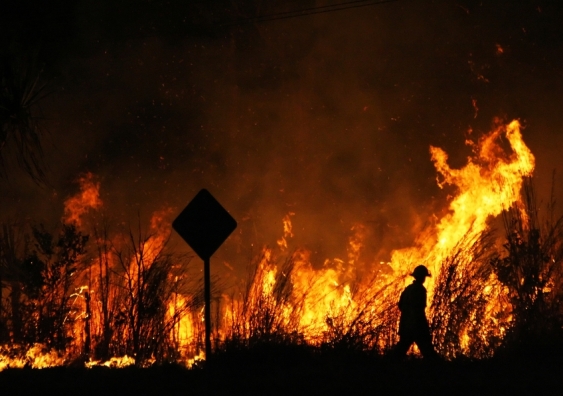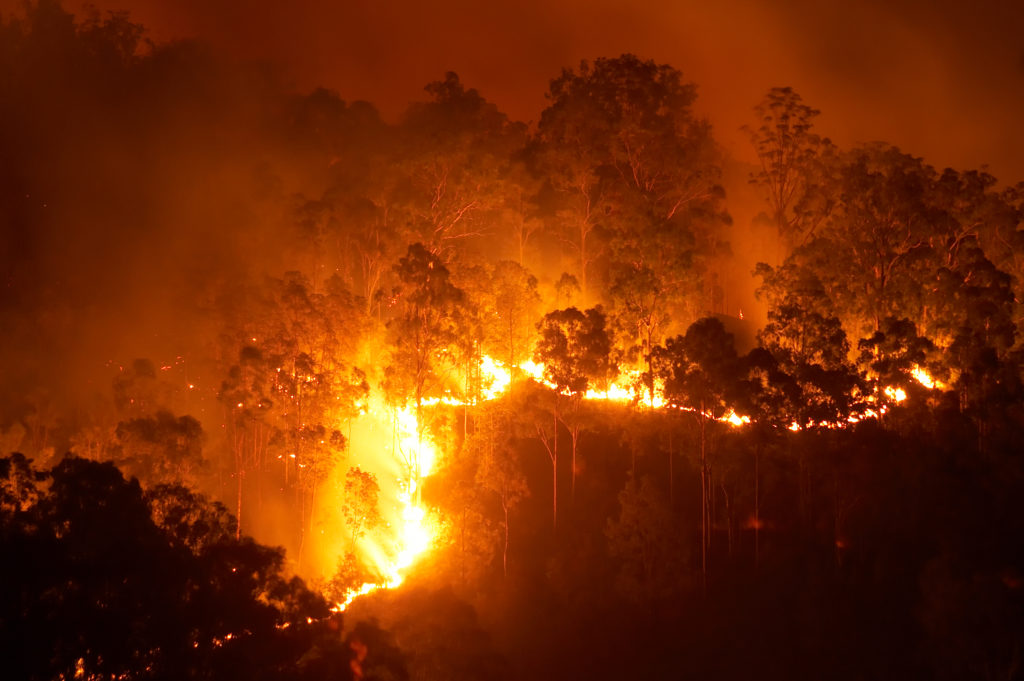Finest Practices in Bushfire Administration for Comprehensive Fire Defense
In the world of bushfire management, the mission for comprehensive fire protection requires a careful technique that encompasses various crucial facets. From strenuous risk analysis and tactical planning to the execution of reliable plants management techniques, the range of finest practices is substantial and intricate. Neighborhood involvement and education play essential roles in promoting resilience and readiness, while early discovery and warning systems act as important safeguards. Furthermore, the seamless control of emergency situation response and evacuation strategies is important for making certain the security and wellness of people despite rising bushfire dangers. As we browse via the subtleties of these finest methods, an exploration into the intricate internet of approaches and methodologies waits for, guaranteeing a deeper understanding of the diverse landscape of bushfire monitoring for detailed fire protection.
Danger Analysis and Preparation
In bushfire administration for fire security, the initial step entails performing a comprehensive threat assessment and creating an extensive plan to reduce possible hazards. Risk evaluation is a crucial process that includes recognizing, evaluating, and reviewing potential dangers that can result in a bushfire. This analysis takes into consideration different variables such as climate condition, topography, fuel lots, and human activities in the location. By comprehending these dangers, fire protection authorities can prioritize locations that are most vulnerable to bushfires and allot resources properly.
Following the threat evaluation, the following critical action is to establish a thorough strategy to deal with the recognized risks. This plan ought to detail approaches for prevention, readiness, response, and recuperation in case of a bushfire. It must additionally include measures for community communication, evacuation, and interaction procedures. By having a well-defined strategy in area, emergency solutions can act quickly and effectively to secure lives, property, and the setting during a bushfire episode. Effective danger assessment and planning are fundamental elements of bushfire management for guaranteeing thorough fire security.
Plant Life Management Methods
After carrying out a comprehensive risk assessment and developing a detailed prepare for bushfire administration, the focus moves to executing effective greenery monitoring techniques. Plants administration plays a vital role in lowering the strength and spread of bushfires. One vital strategy is developing defensible room around homes by removing flammable vegetation and preserving a secure range between vegetation and frameworks. This helps to develop a buffer area that can slow down the progression of a fire and offer a much safer environment for firefighters to safeguard buildings.
In enhancement to producing defensible room, recommended burning is an additional vital plant life administration approach. Suggested burns involve deliberately setting fires under controlled problems to lower the accumulation of fuel, reduce the possibility of high-intensity wildfires, and advertise community wellness. By tactically melting areas with excess plants, gas levels are decreased, making it harder for fires to spread out swiftly and uncontrollably.

Area Engagement and Education And Learning
Efficient community interaction and education and learning are crucial parts in constructing a resilient and proactive method to bushfire management. By entailing community members in the planning and implementation of bushfire administration strategies, stakeholders end up being active individuals in safeguarding their homes and areas. Area engagement fosters a sense of shared obligation and encourages locals to take possession of their safety.
Education and learning plays an important duty in gearing up people with the understanding and skills needed to reduce bushfire threats successfully. Supplying instructional sources ablaze prevention, emptying procedures, and the importance of early detection can dramatically enhance community preparedness. Furthermore, educating locals on the neighborhood bushfire atmosphere, including fire habits and danger factors, allows them to make enlightened choices throughout high-risk situations.
Via ongoing engagement and education efforts, areas can create a cumulative understanding of bushfire threats and work collaboratively to reduce the effect of wildfires. By cultivating a culture of readiness and durability, community participants can enhance their capacity to react successfully to bushfire emergencies and secure both lives and residential property.

Early Detection and Warning Equipments
Community involvement and education and learning function as fundamental pillars in developing proactive bushfire management practices, laying the groundwork for the application of durable very early discovery and caution systems. Early detection and caution systems are important parts in alleviating the effect of bushfires on neighborhoods and the setting. These systems incorporate a variety of approaches and modern technologies focused on determining and alerting authorities and citizens to possible fire break outs quickly and efficiently.
One key aspect of very early discovery systems is the usage of innovative tracking technologies such as satellite imagery, drones, and weather condition terminals to identify indicators of possible fire ignition. These innovations offer real-time data that can be analyzed to determine fire-prone areas and trigger early warnings. Additionally, the assimilation of community-based monitoring networks and automated alert systems can improve the effectiveness of early discovery efforts by entailing locals in reporting potential fire hazards and getting prompt warnings.
Effective early discovery and warning systems rely upon a multi-faceted strategy that integrates technological technology, neighborhood involvement, and quick emergency situation reaction procedures to make certain the prompt and coordinated administration of bushfire cases. By purchasing these systems and promoting collaboration in between stakeholders, communities can enhance their resilience to bushfires and minimize the important site affiliated threats.
Emergency Response and Emptying Plans
A well-coordinated and thorough emergency response and emptying strategy is important for effectively safeguarding lives and home during bushfire events. These plans ought to be diligently crafted, considering variables such as the topography of the location, the density of vegetation, and the potential rate and instructions of the fire's spread.
One crucial link element of an emergency situation reaction plan is the establishment of clear interaction channels to share timely and accurate info to homeowners and emergency -responders. This can include using sirens, mobile alerts, social networks, and neighborhood meetings to guarantee that everyone is notified and recognizes what activities to take.
Evacuation routes should be pre-identified and regularly kept to ensure they are easily accessible throughout emergency situations. Additionally, marked evacuation facilities need to be developed to supply sanctuary, medical assistance, and support services to evacuees.
Normal drills and exercises are vital to familiarize locals with discharge treatments and test the efficiency of the strategy. By constantly updating and examining emergency situation action and emptying strategies, communities can enhance their readiness and strength despite bushfire threats.
Verdict
Finally, effective bushfire administration needs a thorough method that consists of threat assessment, plants administration, neighborhood engagement, early detection systems, and emergency reaction plans. By executing these ideal techniques, areas can better secure themselves from the damaging effects of bushfires - BAL Report. It is vital to focus on positive procedures to mitigate the risks postured by bushfires and guarantee the safety and well-being of individuals and areas in jeopardy
After performing a detailed risk assessment and developing a thorough plan for bushfire management, the emphasis changes to applying effective plant life administration approaches.Efficient neighborhood engagement and education are vital elements in constructing a durable and positive method to bushfire monitoring. By entailing area members in the planning and implementation of bushfire management strategies, stakeholders become energetic individuals in guarding their communities and homes.Neighborhood my review here interaction and education and learning serve as foundational columns in developing aggressive bushfire administration practices, laying the groundwork for the application of durable early discovery and caution systems.In conclusion, reliable bushfire administration requires a thorough approach that consists of danger assessment, vegetation administration, community involvement, very early discovery systems, and emergency situation reaction strategies.